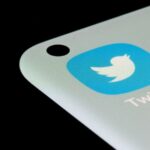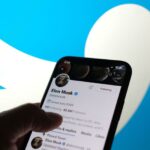
The microblogging social network company, Twitter recently revealed its new policy that determines how its users get verified. Overtime, the blue checkmark badge ID that signifies an authenticated user has been duly criticized, which resulted in misperception based on how the features work. So now it looks like Twitter has heard the critics and is going to review its verification policy next year.
At the early days of 2021, Twitter said they would relaunch its authentication program that will also be accessible to process by new public applicants that seek verification. The social media company proposes to develop a user-friendly ecosystem which allows its subscribers to relate with the interoperability of its platform and its team of customer service. Twitter also established a limited public feedback session to assist with its new policy; the feedback session is valid till December 8.
In 2017, Twitter’s feedback team experienced a less encouraging hearing about the misperception of its verification badge and what it implies. This resulted in the reason why the social media company had to halt processing its subscribers for verification temporarily. In contrast, they sought to have addressed the confused public on the criteria of qualifying for confirmation and the meanings attached to it; if the verification mark is an indicator of importance or a symbol of an active endorsement.
Before 2020, Twitter fixed its authentication program to promote its veracity during elections and other circumstances, but sensitive enough not to be biased about politicking or its parties. Lately, the microblogging platform has verified more medical experts who have been involved in the COVID-19 and the pandemic solutions.
“Since then, we haven’t been clear who can become verified and when, why an account might be unverified, or what it means to be verified,” Twitter said.
For the record, Twitter revealed a list of prominent personnel that are duly qualified to administer a verified account, which includes, sports teams, athletes, activists, government officials, companies entertainers and news corporations.
The social media company said that public figures with the maximum number of followers in its platform are also qualified for verification. Twitter also noted that this criterion is not limited to its microblogging platform alone. It implies that remarkable personnel off Twitters list of recognized accounts such as Wikipedia recommendations, search trends on Google, YouTube or any public means of gaining recognition.
Although the blue badge may signify authentication, Twitter noted that tagged account with the blue symbol is not preferential to its policies that regulate users activities on its platform. All the subscribers signed under the microblogging platform are subjected to its policies that regulate civil veracity, the reverence of violence, illegal stalking, hateful speeches etc. Twitter said they are not irrational about restricting an account that violated its policies; instead, they would judiciously access the related conditions and its guidelines.
Still, on the grounds of making its verification program quite interesting and worthy, Twitter said that users who are in the crosshairs to violating its policies could not access verification. For instance, flagged accounts for policy defiance, or accounts associated with violence/hateful content can’t be acknowledged with the blue badge.
By December 17, Twitter sets to have updated its policies on the ability to distinguish various users based on their level of verification.
Discover more from TechBooky
Subscribe to get the latest posts sent to your email.






